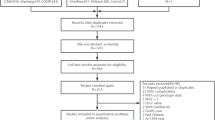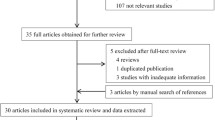Abstract
The development of Alzheimer's disease (AD) has been strongly linked to the apolipoprotein E (APOE) polymorphism. A number studies have reported that the APOE ε4 allele is a genetic risk factor for developing AD, whereas the APOE ε2 and APOE ε3 alleles are considered to be neutral or even protective; however, there are conflicting data about these relationships in certain ethnic populations. Several meta-analyses have been performed to reduce the heterogeneity of results from different studies and estimate the real association in specific ethnicities. The aim of this study was to investigate the association between the APOE polymorphism and AD in an Iranian population. Our results showed a higher incidence of AD among individuals carrying the APOE ε4 allele (OR = 4.81, 95% CI: 3.28–7.05), more notably in those with the APOE ε4/e4 genotype (OR = 7.47, 95% CI: 2.35–23.73), while carrying the APOE ε3 allele was demonstrated to have a protective effect (OR = 0.40, 95% CI: 0.30–0.54). The association between the APOE ε2 allele and AD was not statically significant. However, further studies focusing on other parameters such as age, sex and environmental conditions are needed to reveal the true association between the APOE polymorphism and AD.



Similar content being viewed by others
References
Agarwal R, Tripathi CB (2014) Association of apolipoprotein E genetic variation in Alzheimer’s disease in Indian population: a meta-analysis. Am J Alzheimers Dis Other Dement 29:575–582
Alzheimer's Association (2013) 2013 Alzheimer's disease facts and figures. Alzheimers Dement 9:208–245
Basak JM, Verghese PB, Yoon H, Kim J, Holtzman DM (2012) Low-density lipoprotein receptor represents an apolipoprotein E-independent pathway of Aβ uptake and degradation by astrocytes. J Biol Chem M111:288746
Bayrami M, Hashemi T, Bonyadi M, Ayromlou H, Nazari M, Tabatabaei S (2011) Apolipoprotein E gene polymorphism in Alzheimer patients in northwest of Iran. Aust J Basic Appl Sci 5:1729–1733
Berlau DJ, Corrada MM, Head E, Kawas CH (2009) APOE ε2 is associated with intact cognition but increased Alzheimer pathology in the oldest old. Neurology 72:829–834
Bezprozvanny I (2009) Amyloid goes global. Sci Signal 2:pe16-pe16
Castellano JM et al (2011) Human APOE isoforms differentially regulate brain amyloid-β peptide clearance. Sci Transl Med 3:89ra57-89ra57
Chartier-Hariln M-C et al (1994) Apolipoprotein E, ɛ4 allele as a major risk factor for sporadic early and late-onset forms of Alzheimer's disease: analysis of the 19q13. 2 chromosomal region. Hum Mol Genet 3:569–574
Dodart J-C, Marr RA, Koistinaho M, Gregersen BM, Malkani S, Verma IM, Paul SM (2005) Gene delivery of human apolipoprotein E alters brain Aβ burden in a mouse model of Alzheimer's disease. Proc Natl Acad Sci 102:1211–1216
Farrer LA et al (1997) Effects of age, sex, and ethnicity on the association between apolipoprotein E genotype and Alzheimer disease: a meta-analysis. Jama 278:1349–1356
Ghayeghran AR, Akbarshahi M, Salehi Z, Davoudi-Kiakalayeh A (2017) Analysis of apolipoprotein E genetic variation in patients with Alzheimer disease referred to Imam Reza Clinic, Rasht, Iran, in 2015. Iran J Neurol 16:173
Giacobini E, Gold G (2013) Alzheimer disease therapy—moving from amyloid-β to tau. Nat Rev Neurol 9:677
Gureje O et al (2006) APOE ε4 is not associated with Alzheimer's disease in elderly Nigerians. Ann Neurol 59:182–185
Harris FM et al (2003) Carboxyl-terminal-truncated apolipoprotein E4 causes Alzheimer's disease-like neurodegeneration and behavioral deficits in transgenic mice. Proc Natl Acad Sci 100:10966–10971
Holtzman DM et al (2000) Apolipoprotein E isoform-dependent amyloid deposition and neuritic degeneration in a mouse model of Alzheimer's disease. Proc Natl Acad Sci 97:2892–2897
Huang Y, Mahley RW (2014) Apolipoprotein E: structure and function in lipid metabolism, neurobiology, and Alzheimer's diseases. Neurobiol Dis 72:3–12
Huedo-Medina TB, Sánchez-Meca J, Marín-Martínez F, Botella J (2006) Assessing heterogeneity in meta-analysis: Q statistic or I2 index? Psychol Methods 11:193
Iqbal K et al (2005) Tau pathology in Alzheimer disease and other tauopathies. Biochim Biophys Acta (BBA)-Mol Basis Dis 1739:198–210
Jack CR Jr et al (2011) Introduction to the recommendations from the National Institute on Aging-Alzheimer's Association workgroups on diagnostic guidelines for Alzheimer's disease. Alzheimers Dement 7:257–262
Jiang Q et al (2008) APOE promotes the proteolytic degradation of Aβ. Neuron 58:681–693
Khorshid HK, Gozalpour E, Kamali K, Ohadi M, Karimloo M, Shahhosseiny M (2011) The association between sporadic Alzheimer’s disease and the human ABCA1 and APOE gene polymorphisms in Iranian population. Iran Red Crescent Med J 13:256
Kim J, Basak JM, Holtzman DM (2009) The role of apolipoprotein E in Alzheimer's disease. Neuron 63:287–303
Lee CD, Tse W, Smith JD, Landreth GE (2012) Apolipoprotein E promotes β-amyloid trafficking and degradation by modulating microglial cholesterol levels. J Biol Chem 287:2032–2044
Liu C-C, Kanekiyo T, Xu H, Bu G (2013) Apolipoprotein E and Alzheimer disease: risk, mechanisms and therapy. Nat Rev Neurol 9:106
Liu M, Bian C, Zhang J, Wen F (2014) Apolipoprotein E gene polymorphism and Alzheimer's disease in Chinese population: a meta-analysis. Sci Rep 4:4383
Mak Y et al (1996) Apolipoprotein E genotype and Alzheimer's disease in Hong Kong elderly Chinese. Neurology 46:146–149
Montufar S et al. (2017) Association between the APOE ε4 allele and late-onset Alzheimer’s disease in an Ecuadorian mestizo population. Int J Alzheimer’s Dis 2017
Rajabli F et al (2018) Ancestral origin of APOE ε4 Alzheimer disease risk in Puerto Rican and African American populations. PLoS Genet 14:e1007791
Raygani AV, Zahrai M, Raygani AV, Doosti M, Javadi E, Rezaei M, Pourmotabbed T (2005) Association between apolipoprotein E polymorphism and Alzheimer disease in Tehran, Iran. Neurosci Lett 375:1–6
Seet WT, Anne TJAM, Yen TS (2004) Apolipoprotein E genotyping in the Malay, Chinese and Indian ethnic groups in Malaysia—a study on the distribution of the different APOE alleles and genotypes. Clin Chim Acta 340:201–205
Singh P, Singh M, Mastana S (2006) APOE distribution in world populations with new data from India and the UK. Ann Hum Biol 33:279–308
Strittmatter WJ, Saunders AM, Schmechel D, Pericak-Vance M, Enghild J, Salvesen GS, Roses AD (1993) Apolipoprotein E: high-avidity binding to beta-amyloid and increased frequency of type 4 allele in late-onset familial Alzheimer disease. Proc Natl Acad Sci 90:1977–1981
Strittmatter WJ et al (1994) Hypothesis: microtubule instability and paired helical filament formation in the Alzheimer disease brain are related to apolipoprotein E genotype. Exp Neurol 125:163–171
Stroup DF et al (2000) Meta-analysis of observational studies in epidemiology: a proposal for reporting. Jama 283:2008–2012
Tang M-X et al (2001) Incidence of AD in African-Americans, Caribbean Hispanics, and Caucasians in northern Manhattan. Neurology 56:49–56
Ward A, Crean S, Mercaldi CJ, Collins JM, Boyd D, Cook MN, Arrighi HM (2012) Prevalence of apolipoprotein E4 genotype and homozygotes (APOE e4/4) among patients diagnosed with Alzheimer’s disease: a systematic review and meta-analysis. Neuroepidemiology 38:1–17
Wells G, Shea B, O’Connell D, Peterson J, Welch V et al (2011) The Newcastle-Ottawa scale (NOS) for assessing the quality if nonrandomized studies in meta-analyses. Dept of epidemiology and community medicine. University of Ottawa, Ottawa
Winblad B et al (2016) Defeating Alzheimer's disease and other dementias: a priority for European science and society. Lancet Neurol 15:455–532
Yu J-T, Tan L, Hardy J (2014) Apolipoprotein E in Alzheimer's disease: an update. Annu Rev Neurosci 37:79–100
Author information
Authors and Affiliations
Corresponding author
Additional information
Publisher’s Note
Springer Nature remains neutral with regard to jurisdictional claims in published maps and institutional affiliations.
Rights and permissions
About this article
Cite this article
Abyadeh, M., Djafarian, K., Heydarinejad, F. et al. Association between Apolipoprotein E Gene Polymorphism and Alzheimer's Disease in an Iranian Population: A Meta-Analysis. J Mol Neurosci 69, 557–562 (2019). https://doi.org/10.1007/s12031-019-01381-1
Received:
Accepted:
Published:
Issue Date:
DOI: https://doi.org/10.1007/s12031-019-01381-1




